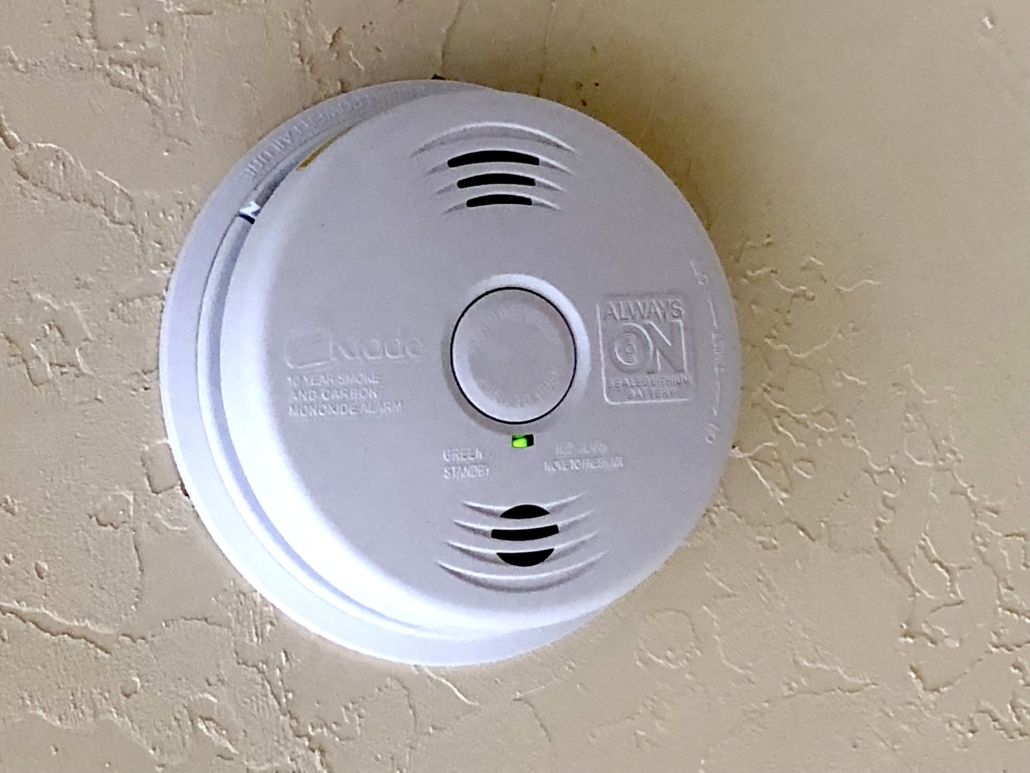FAQ: Are carbon monoxide alarms sensitive enough to warn of all carbon monoxide poisonings?
Short Answer: No, the UL 20234 standard is a compromise, in an effort to avoid false alarms, standard carbon monoxide alarms resist alarming for far longer than is safe.

Are carbon monoxide alarms sensitive enough to warn of all carbon monoxide poisonings? No because 70 ppm is too high for an alert and it won’t necessarily alert when it gets to that level.
Griff Winthrop: You asked me a question a minute ago about whether 10% carboxyhemoglobin was dangerous, and of course I answered it. Yes. What’s the significance of 10% carboxyhemoglobin when we’re talking about the typical standard carbon monoxide detector.
Gordon Johnson: So there was an ongoing discussion about lowering the alarming thresholds on the UL 2034 alarm standard, although I suspect with the current change in Washington, this will not happen. But there was discussion with both the CDC and the United States Consumer Product Safety Commission at least encouraging the UL Laboratories to revise their indoor carbon monoxide alarm standards.
The standards were originally designed with the goal of preventing an adult male, of keeping their COHb level below 10% on the average.
Now the problem with the 10% standard is that is the place where we know we start to have a significant percentage–approaching 40% of the people who get exposed to that level and get sick– of having permanent brain damage. So that concept is as flawed as designing a football helmet for only a 220 pound male, when we know people of all sizes and weight need a football helmet. Such a helmet wouldn’t protect the 300 pound guys who are playing in the football game and it might not protect the 125 pound kids who are playing.
The UL standard is way too permissive in terms of how much carbon monoxide can be there before an alarm goes off. It in theory doesn’t warn until you get to 10% and we know at that level there is a serious risk of permanent brain damage.
Griff Winthrop: The sensitivity of the United Laboratory 2034 standard was initially determined as a balance between being sensitive enough to catch poisonings versus to preventing false alarms. But it is allowing people to get at least to 10%, if not more carboxyhemoglobin, depending upon whether they’re a child or, as you just pointed out, a female.
Gordon Johnson: And it’s not a coincidence that most of the research that’s been done in the United States on carbon monoxide is in the mountain time zone, in states where the altitude is 4,000 ft to 10,000 ft above sea level. The 10% standard is only good at sea level.
So I live at 5o0 ft. You live at what, 50ft? So it’s reasonably close where you are. The oxygen in the air at sea level and at 5o0 ft. are reasonably close. But the amount of oxygen in the air that of sea level for everyone who lives west of Omaha, all the way to San Francisco. Designing a CO standard to alarm to prevent a 10% poisoning at sea level is just not adequate.
UL Compliant Carbon Monoxide Alarms have a Bigger Flaw
Gordon Johnson: But that isn’t even the worse part of the standard. One might assume that an alarm would go off when it got to 70, the lowest threshold on the UL 2034 Standard. The 10% standard is really designed around 70 parts per million for an hour or two. That’s the theory of it.
But that isn’t actually the way the standard works.In reality, you can get 149 parts per million for three hours and 59 minutes before such an alarm has to go off.
why the alarm is not made to go off as soon as it gets to 70 or 90 or whatever the compromise number, is ridiculous. In the European Union, I think the number is 50. Why it doesn’t go off when it hits a set amount, instead of waiting until it’s been at that amount for a certain period of time. And if it drops back below that amount at any time during the Alarming period. It resets.
Griff Winthrop: So you can be in 70% carbon or carbon monoxide, ambient carbon monoxide.
Gordon Johnson: 70 parts per million.
Griff Winthrop: What did I say? 70%. 70 parts per million.
Gordon Johnson: Can’t live in 70% carbon monoxide.
Griff Winthrop: You could be in 70 parts per million. Ambient carbon monoxide in the ambient air and sitting there for a lot longer than what the standard calls for, because it keeps dipping its measurement down below 70. And then it goes right back up. So you’re getting hit with carbon monoxide at a dangerous level over and over again. And the alarm is not telling you that there’s anything wrong.[1]
[1] The UL 2034 most sensitive threshold for alarming is, (taken from the First Alert Manual:) “If the Alarm is exposed to 70 ppm of CO, IT MUST ALARM BETWEEN 60 and 240 MINUTES.”

Leave a Reply
Want to join the discussion?Feel free to contribute!